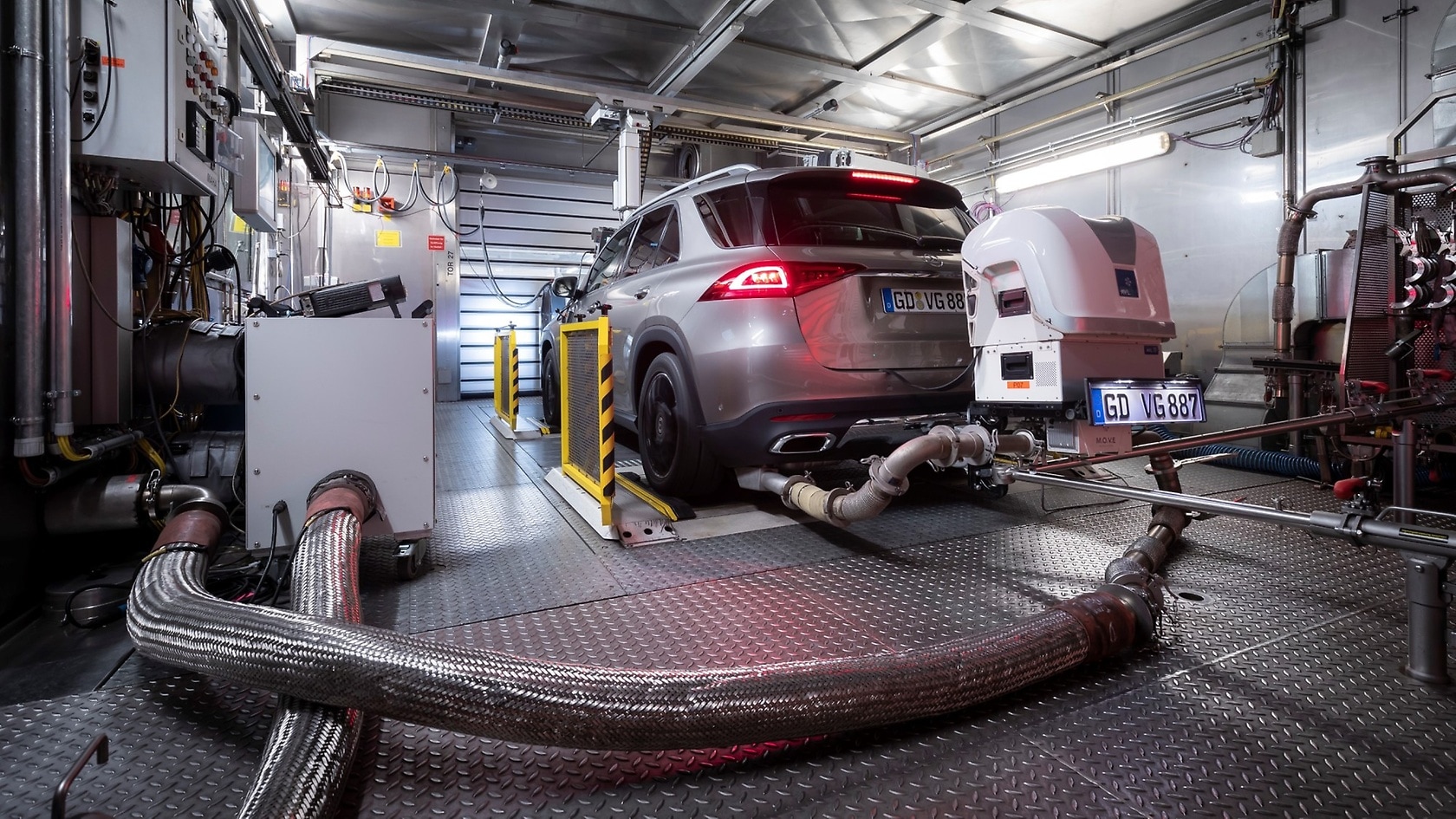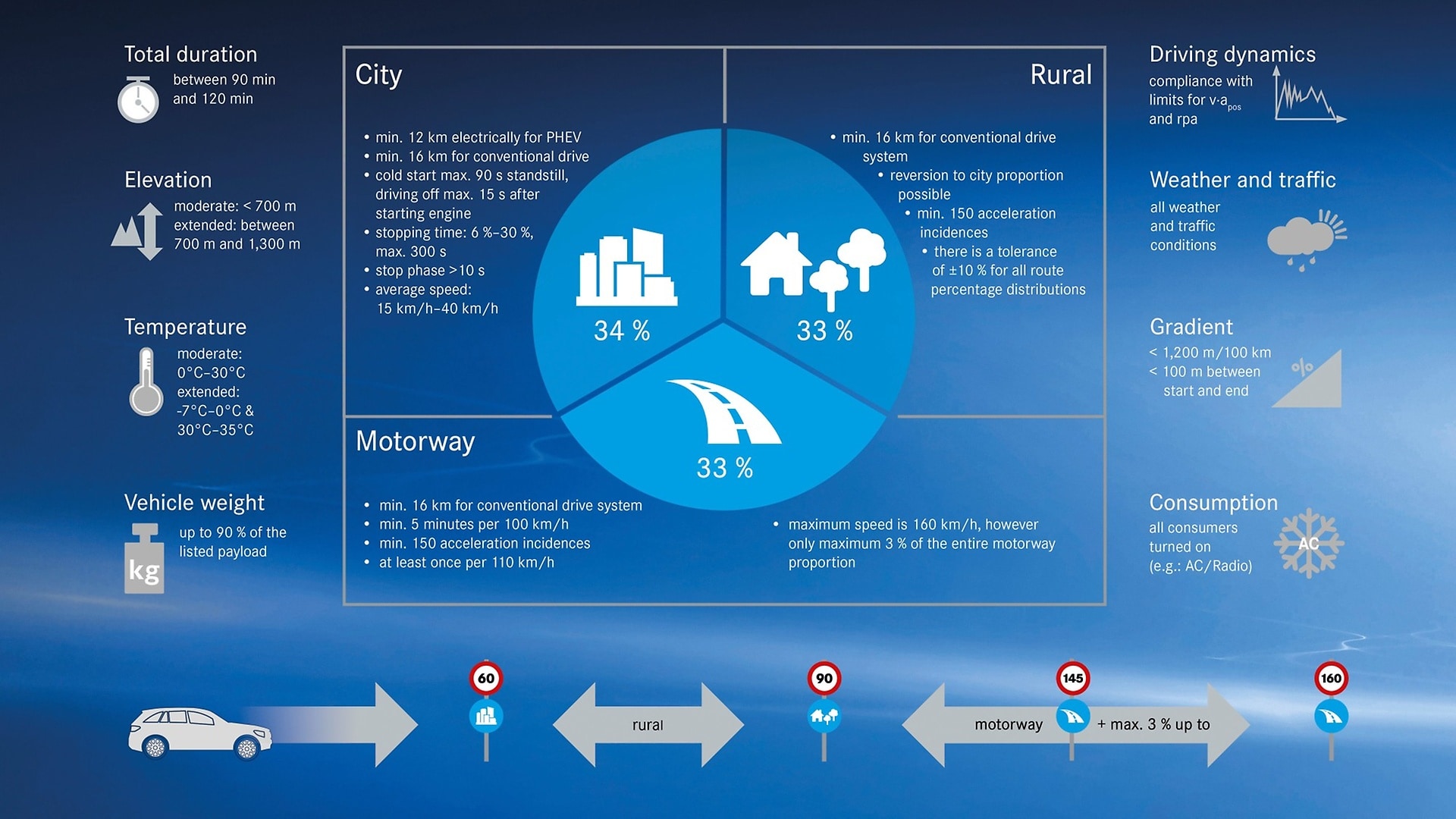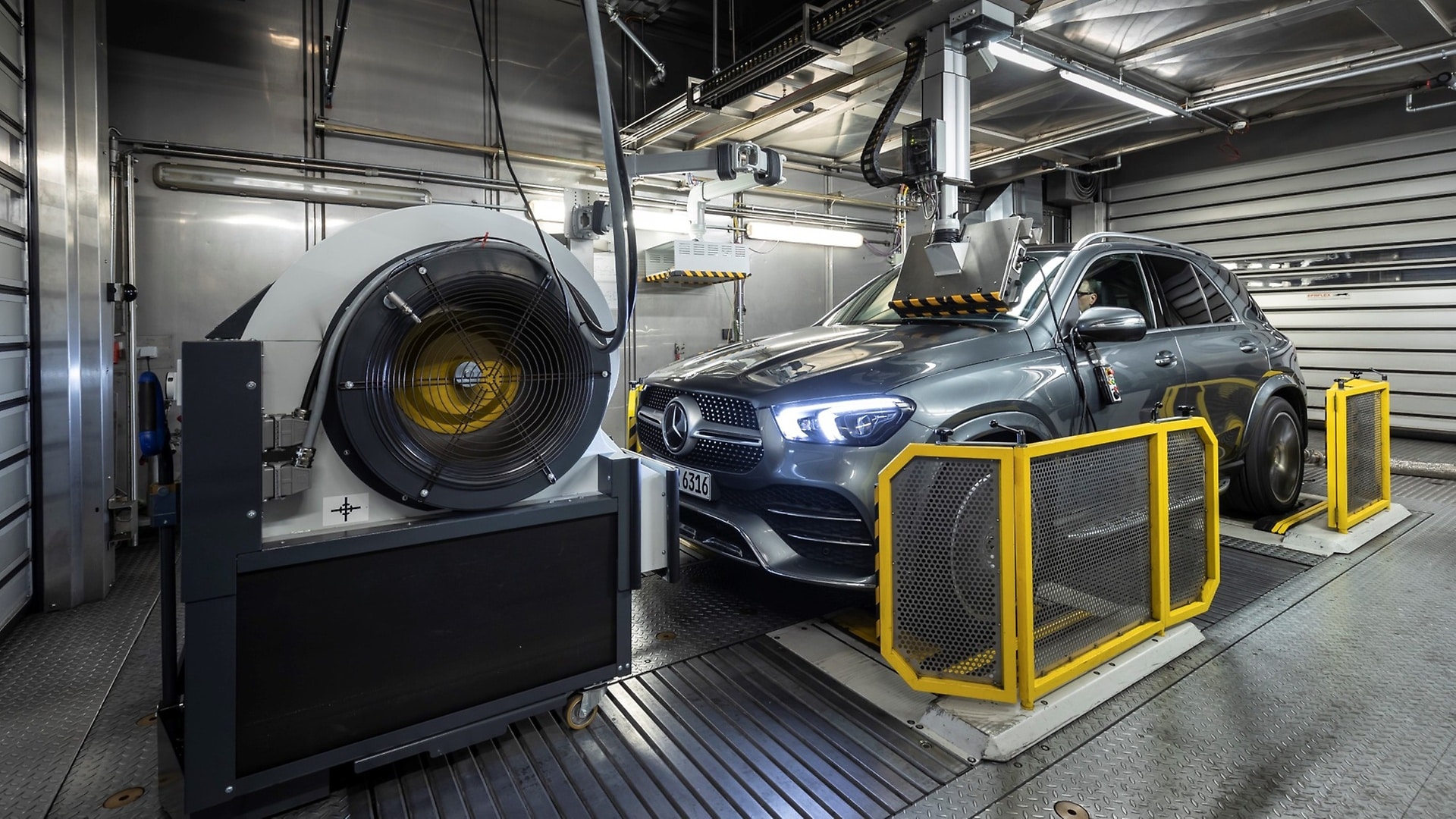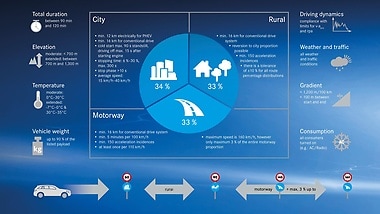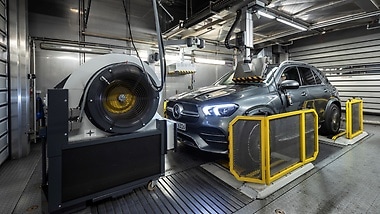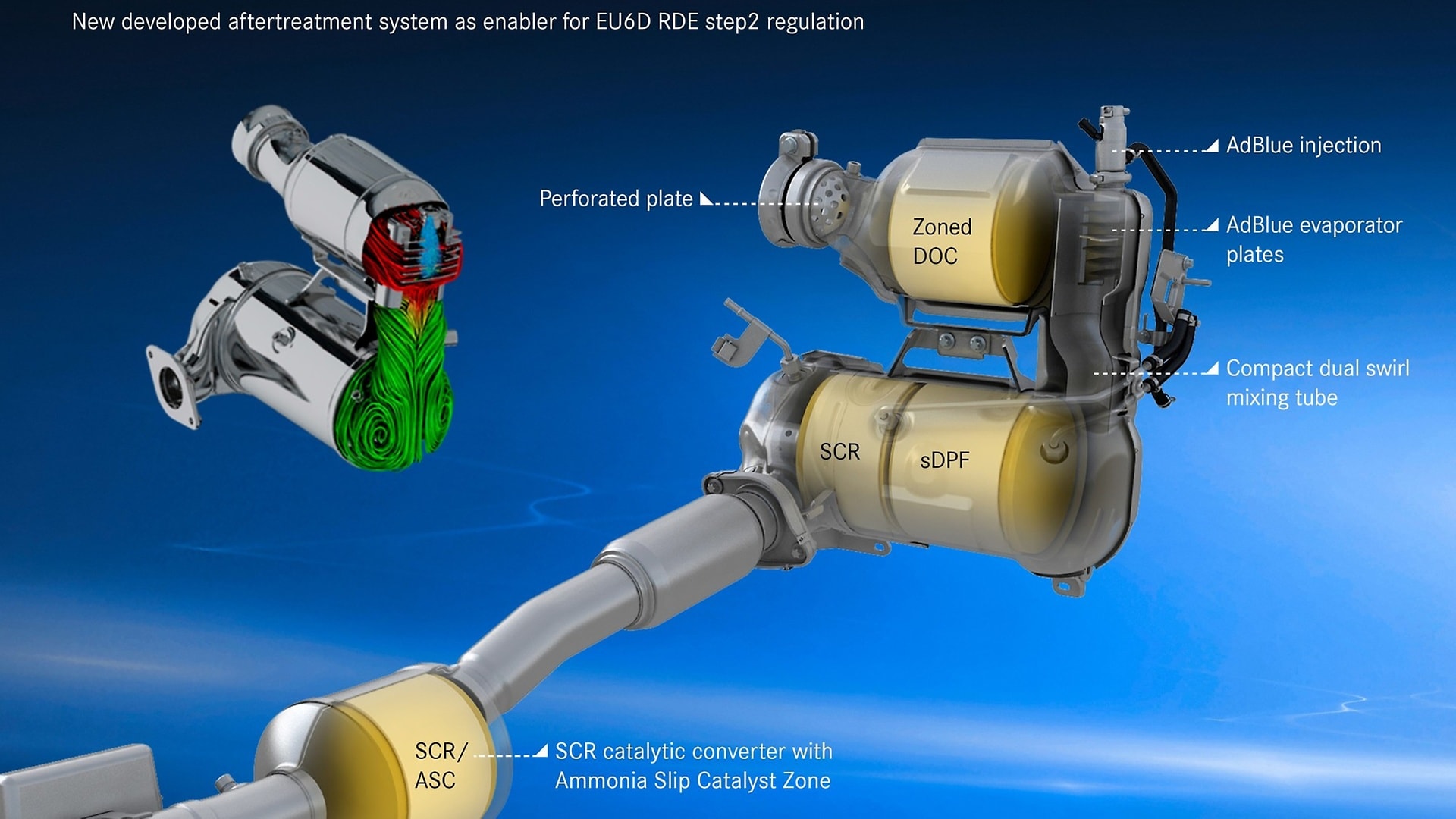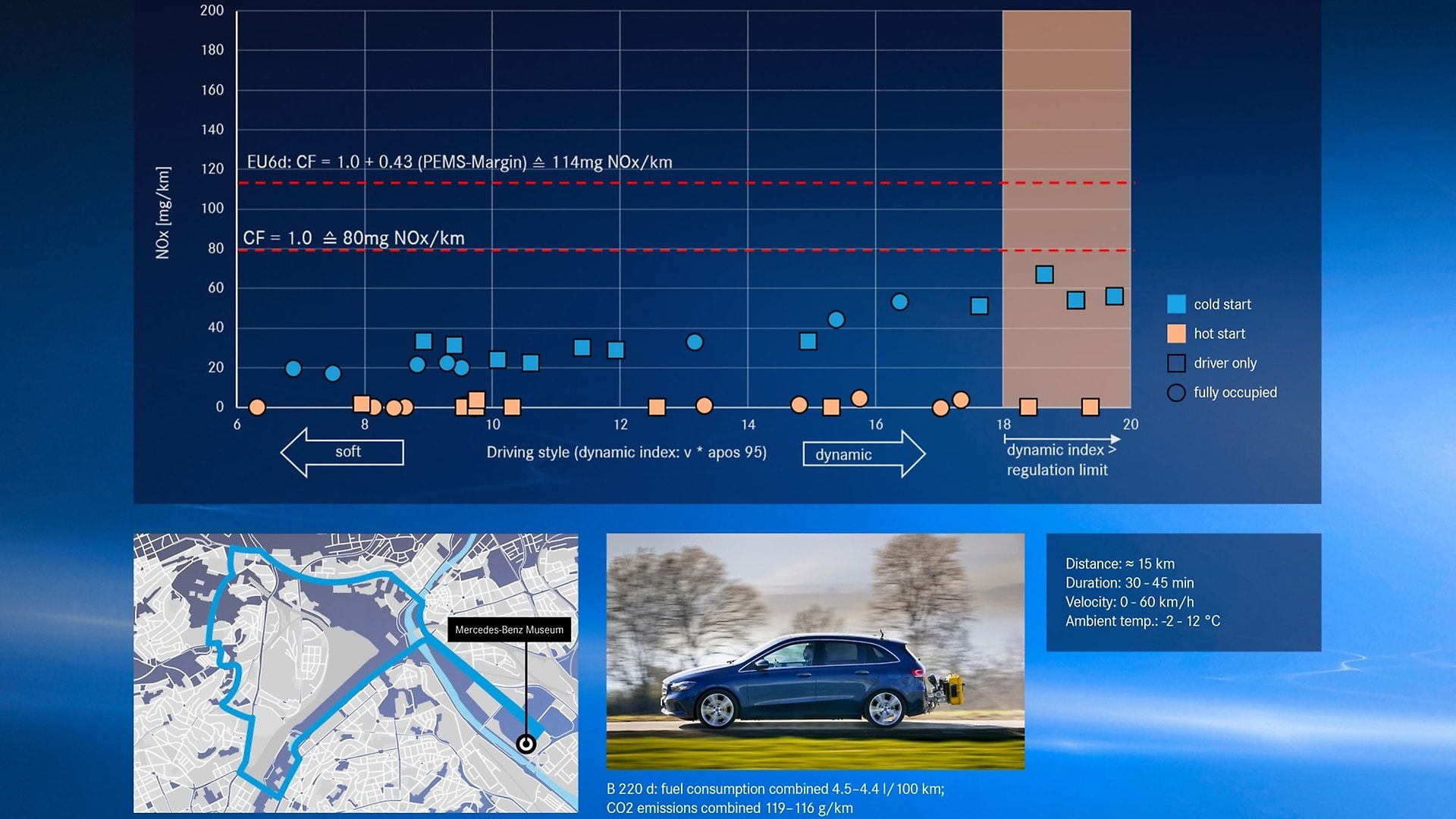Significantly reduced NOx emissions is a characteristic feature of vehicles which are certified according to the Euro 6d-TEMP standard. All Mercedes-Benz passenger cars that can be ordered in the new car business meet this requirement. Furthermore, Mercedes-Benz currently has a whole series of vehicles on the market that already comply with the even stricter Euro 6d standard. This will gradually become mandatory as of 01.01.2020.
The decision made at the start of the decade to develop an entirely new Diesel engine generation is paying dividends. The innovative technologies implemented in the process ensure low NOx emissions. With the changeover to the new engine generation, all new Mercedes-Benz passenger cars available to order now comply with the Euro 6d-TEMP or Euro 6d standards.
The limit values for NOx in emission tests - for Euro 6d these are also at 80 milligrammes per kilometre also during RDE (Real Driving Emissions) tests - are so-called "not to exceed" limit values that must be complied with during each valid RDE test. This means that a vehicle may also not exceed the limit under the worst conceivable combinations of RDE conditions – for example, with a heavy load, in hilly topography, and in unfavourable temperature and traffic conditions. The limit applies not only to new vehicles, but also to vehicles with more than 100,000 kilometers. Results of real-world tests on the road often stay significantly below the limit of 80 milligrammes per kilometre, which is confirmed by independent measurements.
"Mercedes C 300 d goes to the top of our ‘Mr Clean’ hit list"
According to the June edition of the auto specialist magazine "auto motor und sport" (Issue 13, 6 June 2019), emission measurements on twelve test vehicles of different brands resulted in the tested Mercedes C 300 d Estate emitting "almost no NOx". The results measured on the Mercedes-Benz C 300 d Estate (combined fuel consumption 5.6-5.0 l/100 km, combined CO₂ emissions 147-133 g/km)* are stated in more precise terms in the copy: "With a measly 13 milligrammes of NOx, it goes to the top of our ‘Mr Clean’ hit list. Until recently, it seemed inconceivable that diesel engines could achieve such figures at all. […] However, the two-litre diesel called the OM 654 has been systematically trimmed for reduced emissions. The NOx problem of many cities is therefore bound to be resolved as soon as more new cars are registered" (auto, motor und sport, Issue 13, 6 June 2019).
The ADAC reported about its own extensive measurements
Such individual measurements illustrate that the NOx challenge can also be solved technically for diesel-powered vehicles with the new engine generation. However, the average emissions of a vehicle over many thousands of kilometers are much more meaningful in this regard: Mercedes-Benz passenger cars equipped with the latest diesel technology achieve average figures of 20 to 30 mg of NOx per kilometre under RDE conditions.
When it comes to the nitrogen oxide emissions of diesel vehicles from different manufacturers, the ADAC
The Euro 6d standard is even more demanding due to its smaller permissible measuring tolerances. It will not become mandatory for new models until 01.01.2020, and one year later for other vehicles. Mercedes-Benz started an engine initiative in 2016, which includes the all-new four-cylinder diesel engines (OM 654 and OM 654q) as well as straight-six diesels (OM 656). On this basis, which is associated with investments of around three billion euros, a whole host of Mercedes-Benz diesel models, from the A-Class to the GLS, already comply with the Euro 6d standard today.
The background circumstances
1. Emissions testing is no longer conducted just in the lab, but also on the road.
As the football saying goes: "Performance on the pitch is what matters". When measuring emissions, the same applies to performance on the road. For this reason, according to the Euro 6d-TEMP standard and the even more far-reaching Euro 6d standard, the lab measurements according to the WLTP are supplemented by the so-called RDE test (Real Driving Emissions). Pollutant emissions (including nitrogen oxide and particles) are measured in vehicles directly on the road and compliance of limits with conformity factors is checked.
Real Driving Emissions (RDE) - The exhaust gas measurement in the street (Boundary Conditions)
The graphic below illustrates how complex these measurements are.
2. Mercedes-Benz not only prevents the formation of raw emissions, but also uses highly complex emissions control technology.
For example, the OM 654q: thanks to further improved emissions control technology, the powerful four-cylinder from the modern OM 654 engine family already complies with the Stage 2 RDE (Real Driving Emissions) standard which does not come into force until 2020, and is certified to Euro 6d.
Thanks to the near-engine installation, the emission control system has low heat losses and thus very favourable operating conditions in the vast majority of operating situations. Further measures include:
- high and low-pressure exhaust gas recirculation including cooling,
- a diesel oxidation catalytic converter (DOC) to avoid the emission of carbon monoxide (CO) and unburned hydrocarbons (HC),
- a particulate filter for capturing soot particles with combined SCR catalyst function (sDPF),
- an SCR catalytic converter (selective catalytic reduction) for reducing nitrogen oxides. For this purpose, ammonia in the form of the carrier AdBlue® is mixed in with the exhaust gases and conditioned before entering the sDPF,
- an additional underfloor catalyst (SCR) with ammonia slip catalyst coating (ASC).
Emission control technology based on the OM 654q diesel engine by way of example
The so-called NOx emissions demonstrator from Mercedes-Benz Diesel Car Development is supposed to show how efficiently the emission control technology works. The vehicle corresponds 100 percent to the series production configuration in terms of the engine and emission control system as well as the control unit software. The additional sensors and visualization options are intended to provide an experience of the emission performance on the road in a host of driving situations.
For illustrative purposes, here are six different journeys driven in a Mercedes-Benz A 220 d (combined fuel consumption 4.5-4.3 l/100 km; combined CO₂ emissions 118-114 g/km)¹:
3. Since the limits have to be complied with under all possible combinations of the parameters, the emissions in real-world customer operation are usually below the prescribed limits.
Compliance with the limits must be verified for every vehicle model in complex certification measurements in the lab and also on the road. To this end, the vehicles are equipped with the PEMS (Portable Emission Measurement System). The exact process is described here
4. A host of vehicles from Mercedes-Benz already comply with the Euro 6d standard:
| Modell | Combined fuel consumption (l/100 km)* | Combined CO₂ emissions (g/km)* |
|---|---|---|
| A 200 d | 4,3-4,0 | 113-107 |
| A 200 d | 4,5-4,3 | 118-114 |
| B 200 d | 4,5-4,2 | 119-112 |
| B 200 d | 4,5-4,4 | 119-116 |
| CLA 200 d Coupé | 4,4-4,1 | 115-109 |
| CLA 220 d Coupé | 4,4-4,2 | 117-110 |
| CLA 200 d Shooting Brake | 4,5-4,2 | 118-111 |
| CLA 220 d Shooting Brake | 4,5-4,4 | 119-115 |
| GLC 200 d 4MATIC | 5,4-5,2 | 144-137 |
| GLC 220 d 4MATIC | 5,4-5,2 | 144-137 |
| GLC 300 d 4MATIC | 5,9-5,7 | 157-151 |
| GLC 200 d 4MATIC Coupé | 5,5-5,2 | 145-137 |
| GLC 220 d 4MATIC Coupé | 5,5-5,2 | 145-137 |
| GLC 300 d 4MATIC Coupé | 6,0-5,8 | 159-152 |
| GLE 350 d 4MATIC | 7,5-7,0 | 198-184 |
| GLE 400 d 4MATIC | 7,5-6,9 | 199-184 |
| GLE 350 d 4MATIC | 7,9-7,6 | 208-200 |
| GLE 400 d 4MATIC | 7,9-7,6 | 208-201 |
¹The stated figures are the measured "NEDC CO₂ figures in accordance with Article 2 No. 1 Implementing Regulation (EU) 2017/1153. The fuel consumption figures were calculated based on these figures. A higher value may be applied as a basis for calculating the motor vehicle tax:
